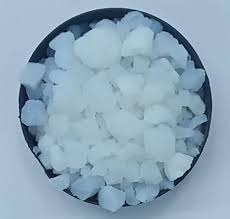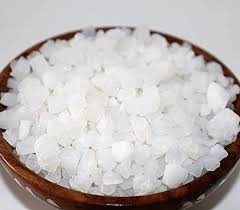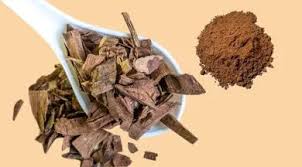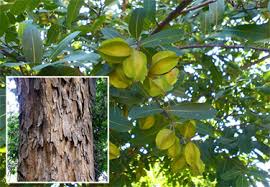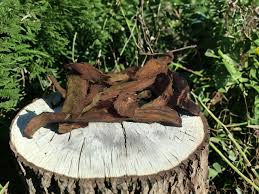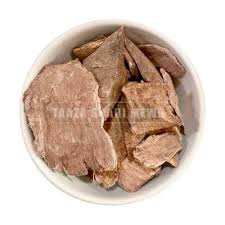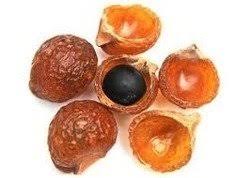
Seasonal Use of Banslochan According to Ayurveda
Ayurveda, the ancient science of life, emphasizes that our bodies are deeply influenced by seasonal changes. Just as nature changes its rhythm with each season, our doshas—Vata, Pitta, and Kapha—also shift in their dominance. To maintain health and harmony throughout the year, Ayurveda recommends adapting our diet, lifestyle, and herbal remedies based on these seasonal rhythms, known as Ritucharya.
Among the many herbs that align beautifully with seasonal needs is Banslochan, also known as Vanshlochan or Tabasheer. Derived from the nodes of bamboo, this siliceous, crystalline substance has been used for centuries for its cooling, strengthening, and rejuvenating properties. But did you know that its effects vary seasonally—and Ayurveda actually prescribes its usage differently across Ritucharya?
At Dirghaanshi, we believe in reviving ancient Ayurvedic wisdom with modern clarity. In this detailed guide, we’ll explore the seasonal uses of Banslochan, how it interacts with seasonal doshic fluctuations, and how to best incorporate it into your yearly wellness routine.
✅ Long Description 🌿
🌿 What is Banslochan?
Banslochan (Tabasheer) is a white, brittle crystalline substance naturally formed inside bamboo nodes, especially in species like Bambusa arundinacea. It contains high amounts of natural silica, calcium, iron, and potassium.
Ayurvedic properties of Banslochan:
Rasa (Taste): Madhura (Sweet)
Guna (Quality): Laghu (Light), Snigdha (Unctuous)
Virya (Potency): Sheeta (Cooling)
Vipaka: Madhura (Sweet post-digestion effect)
Dosha effect: Pacifies Vata and Pitta, neutral for Kapha
These qualities make it ideal for use in different seasons when certain doshas naturally aggravate.
🗓️ Understanding Ritucharya: Seasonal Ayurveda Overview
Season (Ritu) Dominant Dosha Aggravated Dosha
Shishir (Late Winter) Kapha
Vasanta (Spring) Kapha Kapha
Grishma (Summer) Pitta (latent) Vata (accumulating)
Varsha (Monsoon) Vata Vata
Sharad (Autumn) Pitta Pitta
Hemant (Early Winter) Vata Kapha (accumulating)
Each season demands a specific approach to diet and herbs, and Banslochan adjusts wonderfully with each of them.
🌱 Season-by-Season Guide to Banslochan Use
❄️ 1. Shishir Ritu (Late Winter – January to February)
Dominant Dosha: Kapha
Body Condition: Cold, heavy, sluggish
Banslochan Use: ⚠️ Use in moderation
✅ Why:
Shishir season can cause Kapha build-up—heaviness, congestion, and mucus. Since Banslochan is cooling and slightly moist, overuse can aggravate Kapha.
✅ How to Use:
Mix small quantity (1/4 tsp) with drying herbs like trikatu (ginger, black pepper, long pepper)
Take with warm water once a day if needed
🌸 2. Vasanta Ritu (Spring – March to April)
Dominant Dosha: Kapha
Banslochan Use: ✅ Supportive (in balanced form)
✅ Why:
As Kapha melts in spring, it leads to sluggishness, allergies, and colds. Banslochan, when used with warming herbs, can support respiratory health and aid mucus control.
✅ How to Use:
Combine with Sitopaladi churna for seasonal coughs
Mix with tulsi and honey to reduce phlegm
Avoid taking it raw or with milk during spring
🔥 3. Grishma Ritu (Summer – May to June)
Dominant Dosha: Pitta accumulates; Vata starts to rise
Banslochan Use: ✅ Highly recommended
✅ Why:
The cooling and hydrating nature of Banslochan is ideal in summer. It calms Pitta, reduces internal heat, and hydrates tissues.
✅ Benefits:
Prevents acidity, burning urination, and heat rashes
Soothes heat-related headaches and fatigue
✅ How to Use:
1/2 tsp with cold amla juice or gulkand in the morning
Add to herbal sherbets for natural cooling
Safe for children and elderly
🌧️ 4. Varsha Ritu (Monsoon – July to August)
Dominant Dosha: Vata
Banslochan Use: ✅ Very beneficial
✅ Why:
Monsoon increases Vata, causing dryness, bloating, constipation, and joint pain. Banslochan’s Snigdha (moistening) and Madhura (sweet) properties help counter Vata.
✅ Benefits:
Relieves joint stiffness and weakness
Supports digestion and bowel regularity
Helps recover from viral infections and flu
✅ How to Use:
Mix 1/2 tsp with warm milk and ashwagandha at night
Combine with haritaki or hingvastak churna for digestion
🍁 5. Sharad Ritu (Autumn – September to October)
Dominant Dosha: Pitta
Banslochan Use: ✅ Strongly recommended
✅ Why:
Autumn heat disturbs Pitta, leading to skin issues, ulcers, hyperacidity, and anger. Banslochan’s cooling nature soothes inflammatory conditions.
✅ Benefits:
Treats acne, boils, skin rashes
Supports liver detox and acid balance
Prevents blood-related disorders like nosebleeds
✅ How to Use:
Mix with coriander seed powder and honey
Drink with buttermilk or shatavari powder
Use in face packs with sandalwood for skin
🧣 6. Hemant Ritu (Early Winter – November to December)
Dominant Dosha: Vata; Kapha starts to accumulate
Banslochan Use: ✅ Supportive with warming herbs
✅ Why:
While Vata causes dryness and weakness, the body also begins storing Kapha. Banslochan moisturizes tissues, builds immunity, and enhances strength and stamina.
✅ Benefits:
Great for immunity building and nourishment
Helps balance mood, dryness, and fatigue
✅ How to Use:
Mix with ghee, almond paste, or Chyawanprash
Ideal as part of winter Rasayana regimen
Children can be given in milk with saffron and honey
🌿 Banslochan Recipes for Each Season
✅ Summer Detox Drink
1/2 tsp Banslochan
1 tsp rose petal jam (gulkand)
Amla juice + water
→ Drink every morning to cool down body heat
✅ Monsoon Joint Support Milk
1/2 tsp Banslochan
1 tsp Ashwagandha powder
Warm desi cow milk
→ Drink at bedtime to relieve Vata symptoms
✅ Autumn Skin Repair Face Pack
1/4 tsp Banslochan
1 tsp sandalwood powder
Rosewater
→ Apply on face to treat rashes and pimples
✅ Winter Strength Ladoo
Banslochan + ghee + dates + almond powder
→ Make into small balls and take 1 daily for strength & warmth
🧘♀️ Who Should Use Banslochan Seasonally
✅ People prone to heat sensitivity or skin allergies
✅ Children and elderly needing seasonal immunity
✅ Vata-Pitta types with fluctuating digestion and mood
✅ Those undergoing Panchakarma or seasonal detox
⚠️ Precautions & Storage
Do not overuse in Kapha-dominant seasons
Avoid synthetic Banslochan—use natural, purified forms only
Store in glass container, away from moisture
Consult your Ayurvedic practitioner for customized seasonal doses
📖 Classical References
📜 Bhavaprakasha Nighantu – Describes Banslochan as “cooling and strengthening”
📜 Charaka Samhita – Mentions Banslochan in Rasayana and Pitta-pacifying remedies
📜 Ashtanga Hridayam – Suggests use in seasonal digestive support formulations
✅ Conclusion 🌿
As the seasons shift, so do our body’s internal rhythms and imbalances. Ayurveda teaches us to live in harmony with nature, and Banslochan offers a powerful yet gentle herbal support to keep your mind, body, and doshas in balance all year round.
Whether it’s summer heat, monsoon weakness, autumn rashes, or winter fatigue—this silica-rich bamboo crystal adapts to your body’s seasonal needs, restoring strength, calmness, and clarity. At Dirghaanshi, we encourage you to include this ancient Ayurvedic marvel in your Ritucharya (seasonal regimen) and experience holistic wellness—one season at a time.


